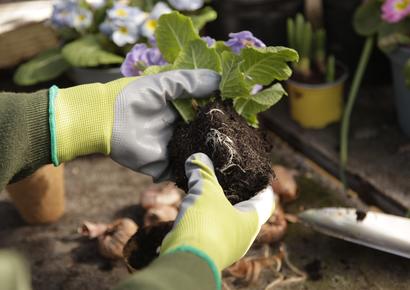
Plant Supports
It’s April. The tulips and daffodils will soon be fading, primula are doing their thing. The warming soil spurs on fresh and lively new foliage from hardy herbaceous perennials, and deciduous shrubs and trees zing with lime green as buds break their dormancy.
Now is a good time to get some plant supports in, around those plants that tend to bend, flop and even snap at the base. This could be plants like paeones, delphiniums, crocosmia, asters and even some shrubs. The trick to keeping these floppy plants looking great for as long as possible, is to get a support structure in nice and early, so they grow up through it. This way, they hold up their natural form, and the straight jacket effect of retrofitted plant supports is avoided.
As soon as the stems flop and fall, they start growing towards the light. Once picked up and supported, they carry on growing upwards, leaving you with a zig zag kink in the stem and sometimes leave and flowers pointing at strange angles. Being proactive about supporting plants long before they need it not only avoids this, but is also a lot easier. Trying to get around plants in the middle of summer inevitably ends up like a game of Twister, tangled in string and canes, sometimes causing more damage than is repaired. Get in there early.
Many plants have a floppy tendency thanks to the rich fertile soils that gardeners pride themselves on cultivating, and the space we give them to flourish, making for fleshy and exuberant growth lacking in strength. In nature, genreally poor fertuile soils keep them lean, tough and upright. Jostling for space in meadows and hedgerows, plants hold each other up as they lean and clamber on their neighbours. Plant breeding also has a hand in the floppy problem, as gardnerers are attracted to plants with oversized showy blooms that weigh branches down, especially after rain.
There are many types of plant support avaibale to buy from horticultural retailers. A good investment are the pricey but very long lasting rustic steel supports, which are beautifully timeless. A cheaper and more natural choice may be to use whatever prunings, twigs or branches you can spare. Simply stick them in the ground around the plants that need support, ideally suppprting them to roughly half their expected height. For more shwy plants like peonies, you can bend willow or hazel to make a neta hooped 'fence' around them. Twigs and sticks can even be woven into artistic shapes and domes, through which the stems emerge.
In the case of shrubs like Hydrangea paniculata, pruning also has a role to play. When cut back hard, they produce huge flop-prone flower heads, but fewer of them. Prune them less, and you'll get more, smaller flowers, and a more natural shape that doesn't succumb to gravity.
Last year was a bit of flop by any standards! Support your plants, and they'll support you.


